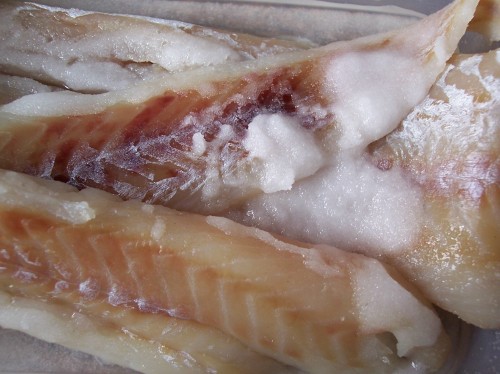Here in the UK, rice pudding has long been associated with nursery food (blame the Victorians, perhaps), school dinners or, at best, comfort food for the Winter. When slowly baked in the oven the milk reduces, the rice becomes thick and a brown skin forms on the top. The flavouring, apart from sugar, comes from a sprinkling of nutmeg and sometimes (rather unusually) a bay leaf. Safe, but unexciting – and to some people a complete turn off. Spanish rice pudding, however, is something entirely different and it would be so easy for the uninitiated to miss out on a treat. Spaniards appear to have a very sweet tooth and love their creamy desserts. The sweet vanilla custards crema catalana (a version of the French crème brûlée) and flan (similar to crème caramel) are both very popular, as is this very un-British rice pudding. Flavoured with vanilla, coconut, cinnamon, lemon and orange rind it is served chilled and is a popular sweetener at the end of the meal in restaurants and tapas bars. This is not a dish for a winter day (or the nursery) but ideal to finish off a summery meal. My family’s verdict was that this was really delicious so I shall certainly be making it again, especially as it was so easy. I would definitely serve it as part of a Spanish themed meal, possibly with some fresh fruit. Caramel oranges would be ideal and in keeping with the Spanish theme. A Spanish biscuit or small churro as an extra would be a good addition in place of some of the suggested serving toppings.
My starting point for this recipe was a combination of two found online. The first – my main source – was from The Times Online: Cinnamon Rice Pudding with a few ideas from the Canadian site Lululuathome, although I did not add either the egg or condensed milk suggested in this second recipe. The first time I used part milk and part coconut milk made from 25g dessicated coconut soaked in 250ml boiling water. A better alternative, which avoids having to discard the coconut, is to use all milk and add 1oz/25g coconut powder. Another alternative would be to use a can of coconut milk, which is available in a low fat version, topped up with milk. I took my quantities from the Times recipe, which is supposed to serve 4-6 but this would give very small portions: I prefer to think of it as for 3-4 people, even though it is rich. If it was cooked for slightly less time the portions would be larger but a little more runny.

'Meanderings through my Cookbook' http://www.hopeeternalcookbook.wordpress.com
Arroz con Leche
Spanish Style Rice Pudding
(Serves 3-4)
1¾ pints/1 litre milk (whole or half fat)
1 small/medium cinnamon stick
3 whole cloves or a tiny pinch of ground cloves (optional)
Zest strips peeled from a lemon
Zest strips peeled from an orange (plus a few thin zest strips – see below)
4ozs/125g
short-grain rice (Spanish Calasparra or UK Pudding Rice)
3ozs/100g caster sugar (could reduce a little)
1 tsp vanilla extract
½ tsp ground cinnamon to serve
A few thin orange zest strips to serve (optional)
A little dessicated coconut (optional)
1. Remove the zest from the fruit with a potato peeler, making sure no white pith is included. Put the milk, cinnamon stick and clove (if using) in a saucepan along with the lemon and orange zests. Bring to the boil then take off the heat and put to one side.
2. Leave for the flavours to infuse for 30 minutes. Strain and throw away the rinds and cinnamon stick.
3. Return the milk and heat through in the saucepan. Bring to a simmer and then add the rice.
4. Cook on a low to medium heat. Stir the rice and milk regularly for 10 minutes so it does not start to stick or burn. Add the sugar and vanilla extract. Continue to cook, stirring regularly for a further 10 minutes.
5. When the rice mixture has thickened and the grains are cooked (they should be soft when squeezed between a thumb and finger) remove from the heat.
6. Allow the rice mixture to cool and then chill in the fridge.
7. Serve chilled in small dishes dusted with cinnamon and a few strips of orange zest and/or dessicated coconut.
















 Search Food Blogs
Search Food Blogs 

